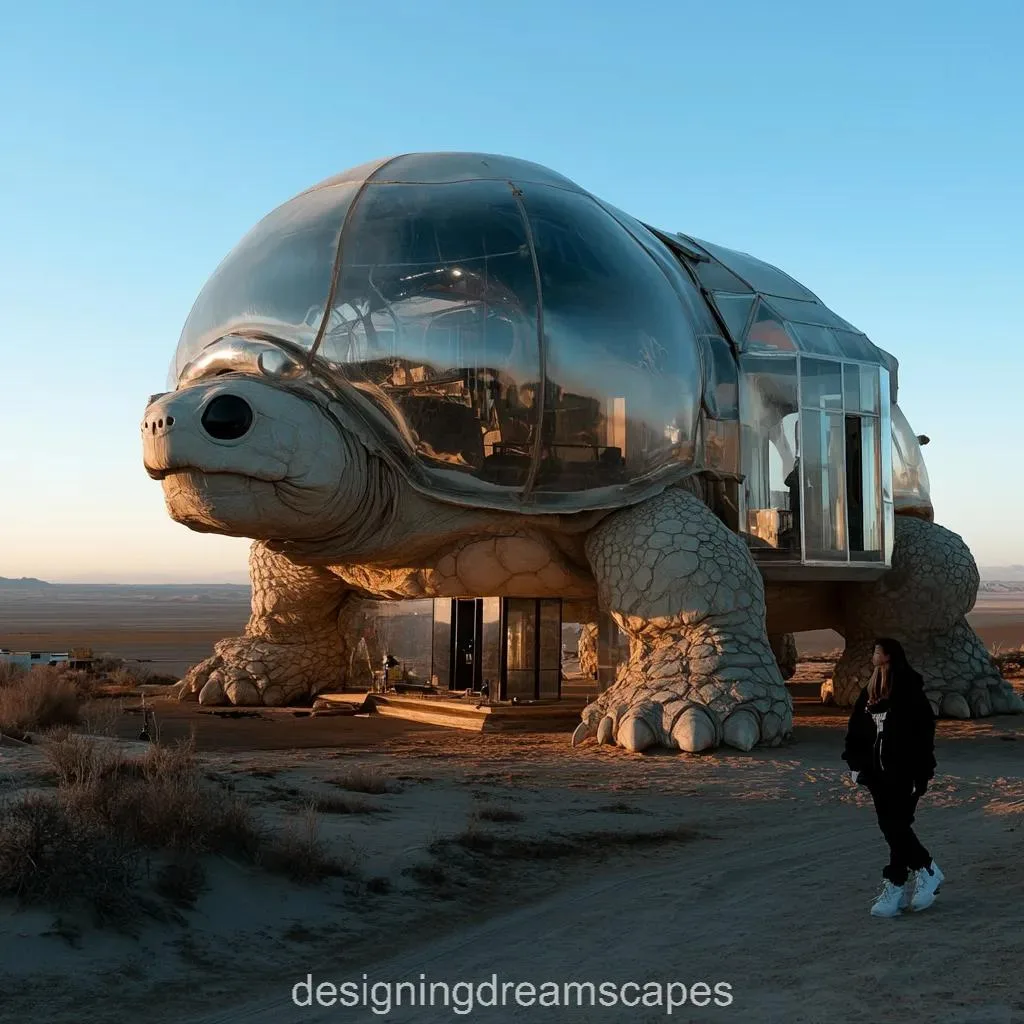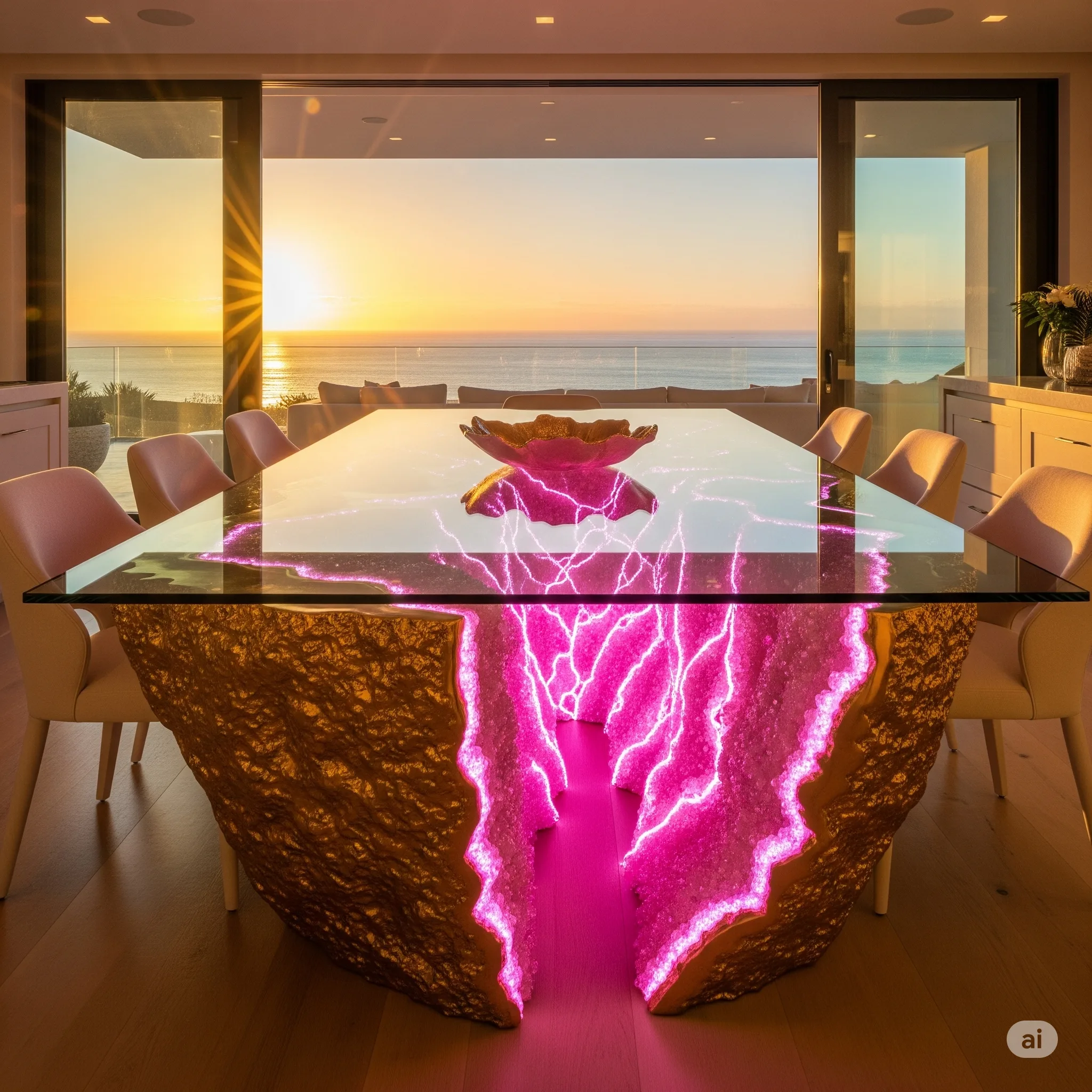Contents
A Unique Concept in a Harsh Landscape
In the vast, sun-scorched stretches of the Gobi Desert, one of the most hostile and arid places on Earth, an unexpected structure rises from the sand—organic in shape, serene in spirit, and rich in symbolism: the Tortoise House in the Gobi Desert. Far from being just an architectural novelty, this house represents a harmony between nature and human ingenuity, where ancient wisdom meets modern ecological design.
Shaped like a tortoise—a creature known for its longevity, patience, and resilience—this house offers more than shelter. It symbolizes survival in extreme conditions and a gentle invitation for humans to live in deeper connection with their environment. As the world faces climate challenges and rapid urbanization, the Tortoise House in the Gobi Desert stands as a tranquil testament to sustainable living, resilience, and mindfulness in the face of nature’s stark beauty.
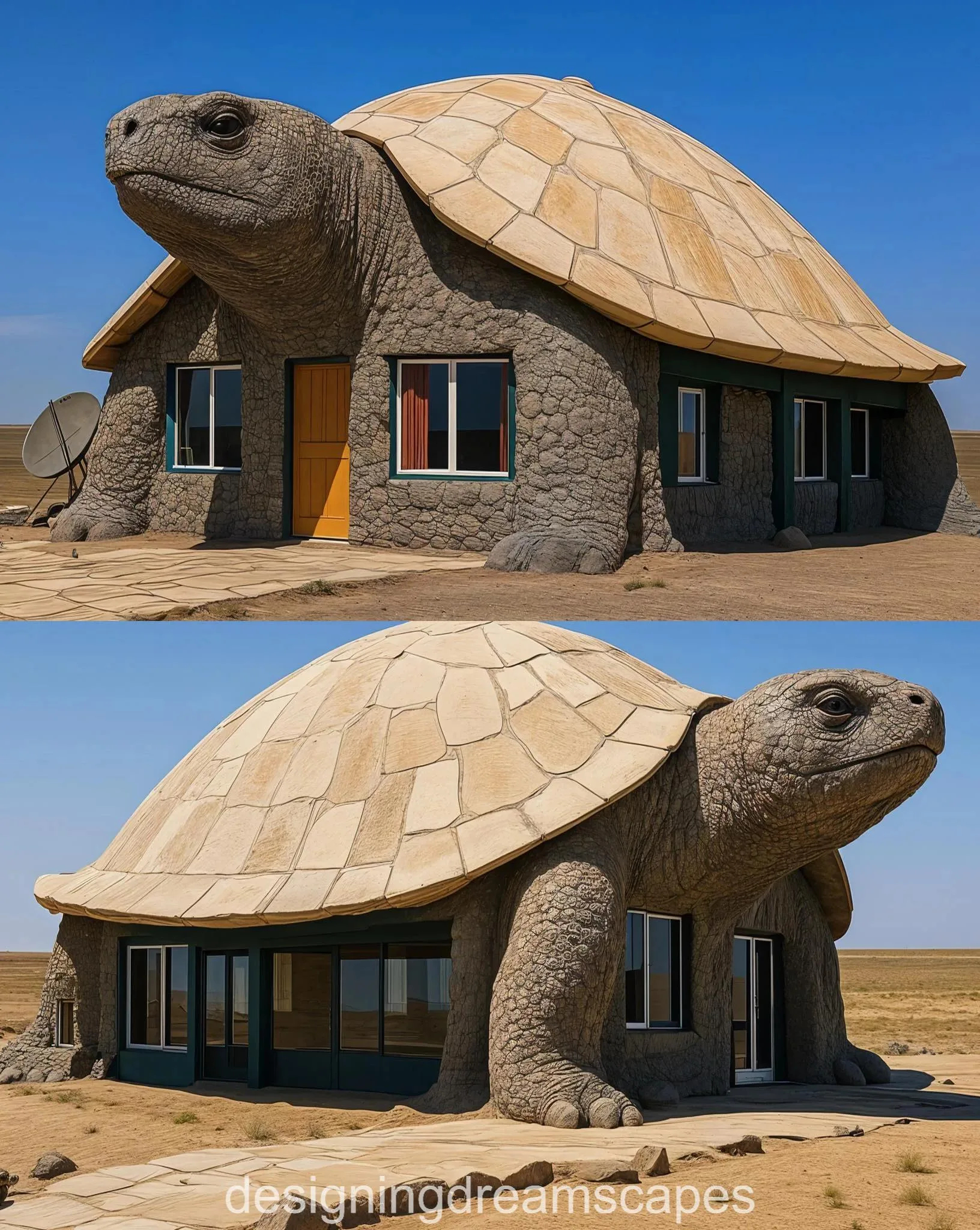
Exploring the Depth and Design of the Tortoise House
1. The Gobi Desert: A Landscape of Extremes
Before delving into the architecture, it’s important to understand the environment it was born into. The Gobi Desert, spanning parts of northern China and southern Mongolia, is a land of paradoxes. Temperatures can range from -40°C in winter to 45°C in summer. Sandstorms, rare oases, and endless dunes define this ecosystem, making it one of the most inhospitable places for human settlement.
Yet, in the midst of this seeming desolation, life persists. Camels, snow leopards, and hardy desert flora have adapted over centuries to survive here. So too must human structures, which brings us to the idea of a home that doesn’t fight nature—but flows with it.
2. The Inspiration: Why a Tortoise?
The concept behind the Tortoise House in the Gobi Desert is rooted in both symbolism and function. The tortoise, with its domed shell and self-contained resilience, provides a perfect metaphor and structural reference for desert living.
- Symbolism: In many cultures, the tortoise symbolizes wisdom, endurance, and a grounded life. In Eastern philosophy, it’s often associated with stability and harmony—qualities deeply needed in an unstable, shifting landscape like the Gobi.
- Practicality: A tortoise shell naturally repels heat, offers a dome-like insulation, and deflects wind. Its shape is aerodynamic and grounded, minimizing exposure to harsh desert conditions. These same qualities are mirrored in the architecture of the house.
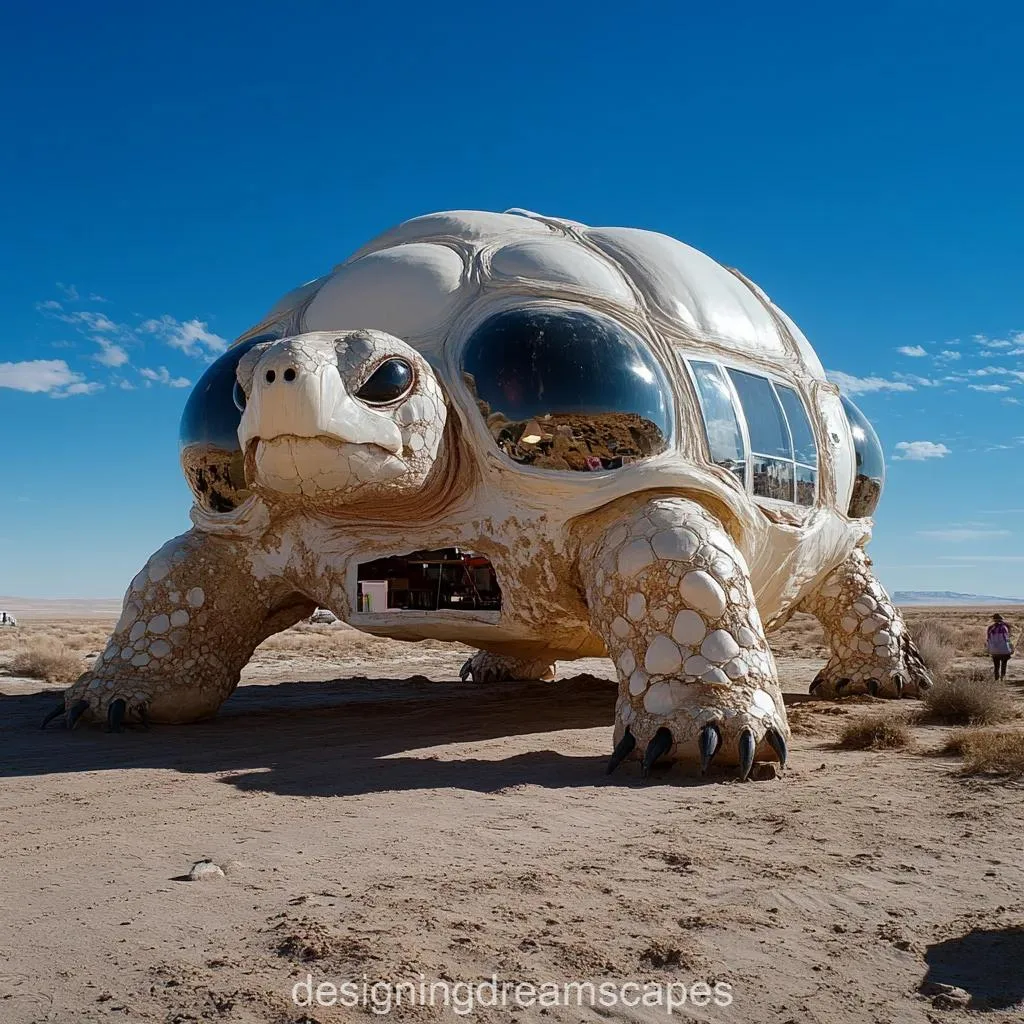
3. Architectural Design: A Bio-Inspired Shelter
The structure of the Tortoise House in the Gobi Desert is more than an homage to nature; it is a triumph of sustainable architecture. Designed with bio-mimicry principles, the house blends organically with the surrounding sand dunes, appearing almost like a creature that has emerged from the earth itself.
Materials Used
- Earth and Sandstone: The outer layer is composed of locally sourced sandstone and compressed earth, which help regulate internal temperature and reduce environmental impact.
- Solar Tiles and Reflective Shell: The “shell” of the house is covered with specially designed solar tiles that capture energy during the day and glow subtly at night—like the gentle glow of desert moonlight.
- Recycled and Sustainable Interior Elements: Inside, the house features bamboo furnishings, clay walls, and water-saving systems. Every material was chosen to harmonize with the ecosystem and reduce waste.
Structure and Layout
- The Dome: The dome shape is not just symbolic—it enhances structural integrity and allows for optimal airflow.
- The Underground Chamber: Part of the house lies beneath the sand, using earth insulation to maintain a cool, livable temperature even during peak summer.
- The Central Courtyard: At the heart of the structure is a small sunken courtyard with desert-adapted plants and a water collection system that captures rare rainfall and dew.
4. Living in the Tortoise House: A New Desert Lifestyle
Living in the Tortoise House in the Gobi Desert is a study in mindfulness, simplicity, and harmony with the environment.
Daily Life
Residents wake up to the soft glow of the sun filtered through the shell, surrounded by silence punctuated only by the wind. Meals are prepared using solar cookers, and water is used sparingly, collected and recycled through smart, passive filtration systems.
Electricity comes from solar energy, and the house is equipped with systems to monitor humidity and wind, allowing the structure to “breathe” with the desert, adapting to its rhythms.
Slow Living Philosophy
The home encourages a lifestyle of minimalism and introspection. With limited external distractions and the vast openness of the desert beyond, it’s a space to reconnect—with oneself and with nature.
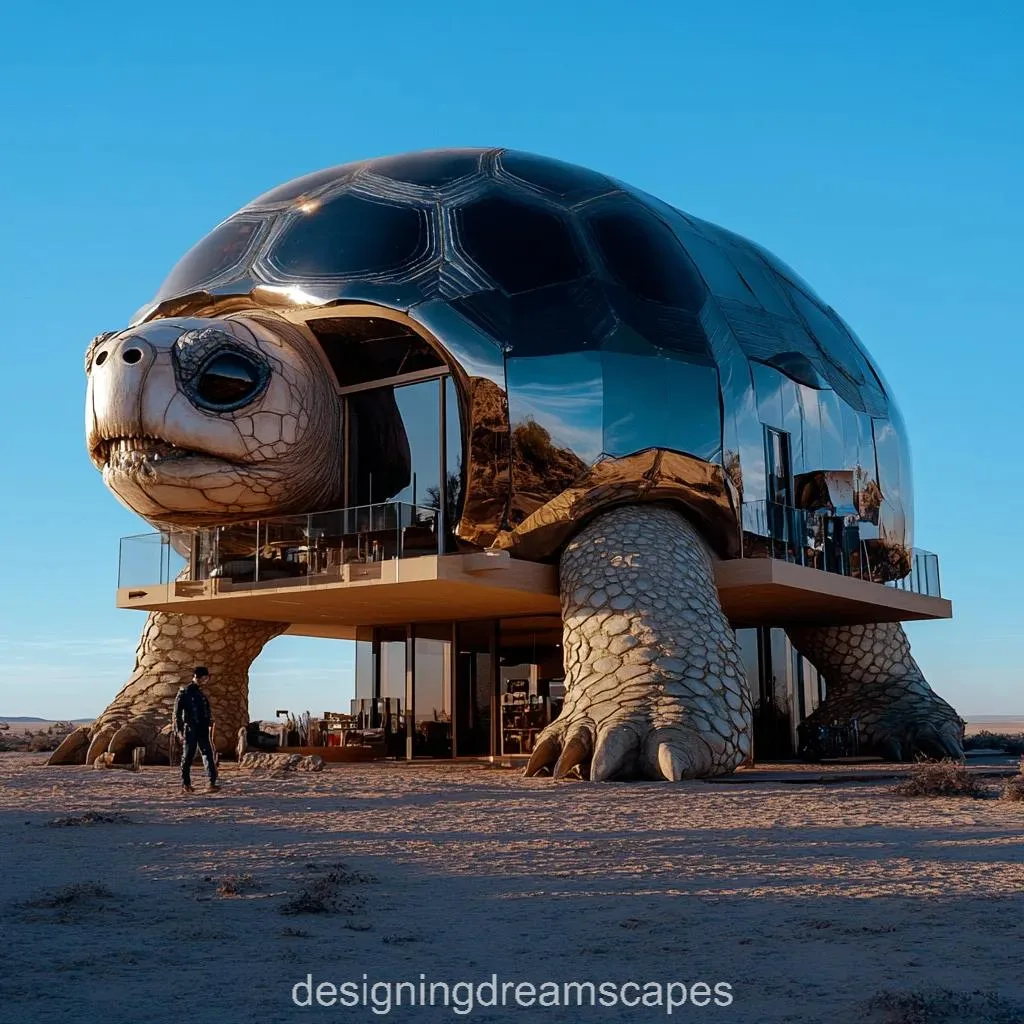
5. Ecological Impact and Sustainability
The Tortoise House is not just eco-friendly; it’s restorative. It aims to give back to the desert more than it takes.
Water Management
Rainfall is scarce in the Gobi Desert, so the house includes an innovative water harvesting and condensation system that collects morning dew and filters graywater for reuse in the courtyard garden.
Energy Efficiency
By utilizing passive solar design, natural ventilation, and thermal mass, the house maintains a stable internal temperature year-round, requiring minimal energy input.
Wildlife Coexistence
Rather than fencing out wildlife, the structure integrates non-invasive boundaries that allow desert animals to coexist peacefully. The courtyard even includes elements to provide water for passing creatures during dry spells.
6. Cultural Significance and Human Connection
The Tortoise House also serves as a cultural and philosophical anchor. Built in collaboration with Mongolian artisans and inspired by nomadic architecture, it bridges modern sustainability with ancient wisdom.
Community Learning Center
Part of the structure is devoted to teaching local residents and visitors about desert ecology, sustainable living, and traditional crafts.
Spiritual Retreat
Some visitors come not just for the architecture, but for spiritual refuge. The house has hosted writers, monks, and environmentalists seeking inspiration in the solitude of the desert.
7. Tourism and Awareness
Though remote, the Tortoise House in the Gobi Desert has attracted global attention. It has become a destination for eco-tourists, architecture enthusiasts, and cultural scholars. Guided tours educate visitors on environmental adaptation and the importance of preserving desert ecosystems.
In doing so, the house contributes to local economies and raises awareness about ecological stewardship.
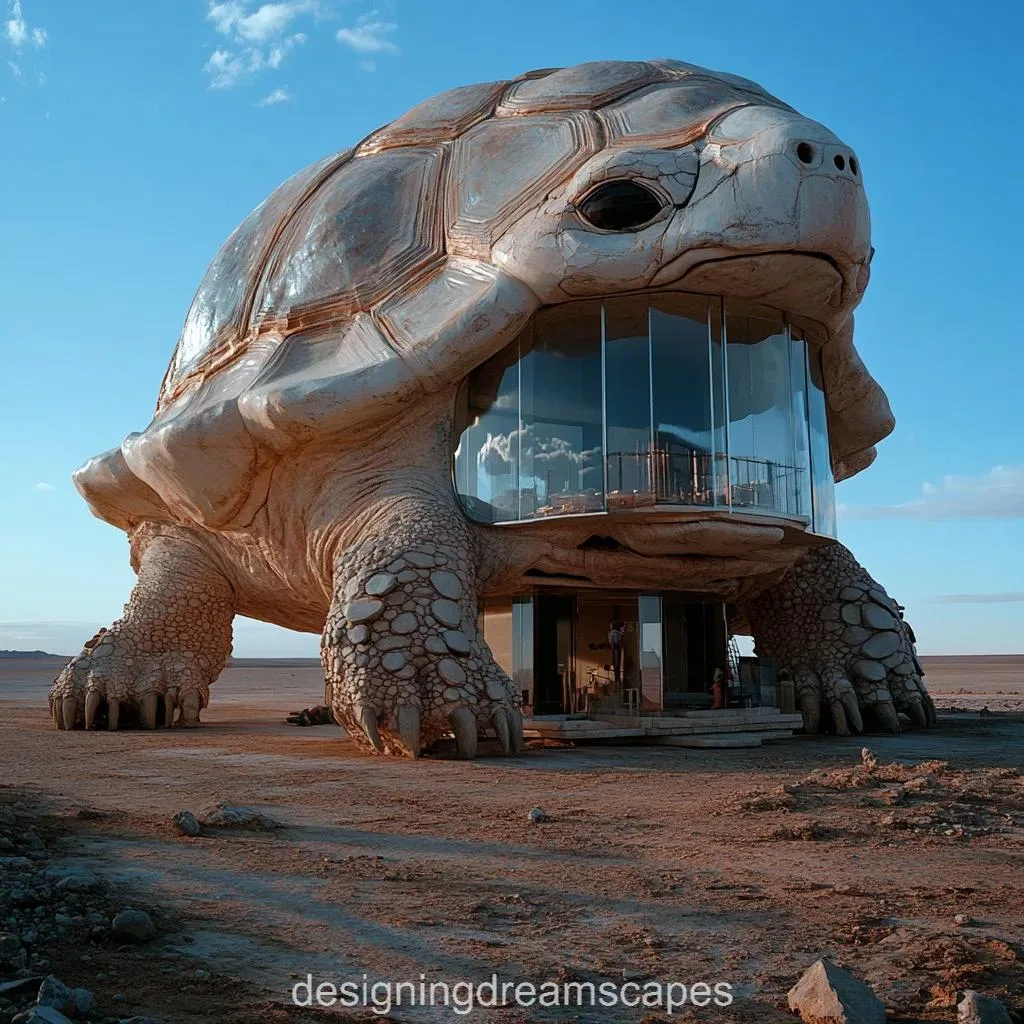
Conclusion: Lessons from the Shell
The Tortoise House in the Gobi Desert is more than a building—it is a manifesto of resilience. By echoing the wisdom of nature and the patience of the tortoise, it shows us how we can build not just in harmony with the environment, but in reverence to it.
In an age when climate change threatens our cities and ecosystems alike, the house offers a compelling alternative: live simply, live mindfully, live slowly. It teaches us that shelter isn’t just protection from the world—it can be a reflection of our values, our respect for nature, and our role within a larger, interconnected web of life.
As the sun sets over the Gobi and the shell of the house begins to glow under starlit skies, it’s not hard to see why this tranquil refuge is inspiring a new generation of thinkers, dreamers, and designers. The Tortoise House in the Gobi Desert is a quiet revolution—one built not with noise or haste, but with grace, care, and deep connection to the land it calls home.

